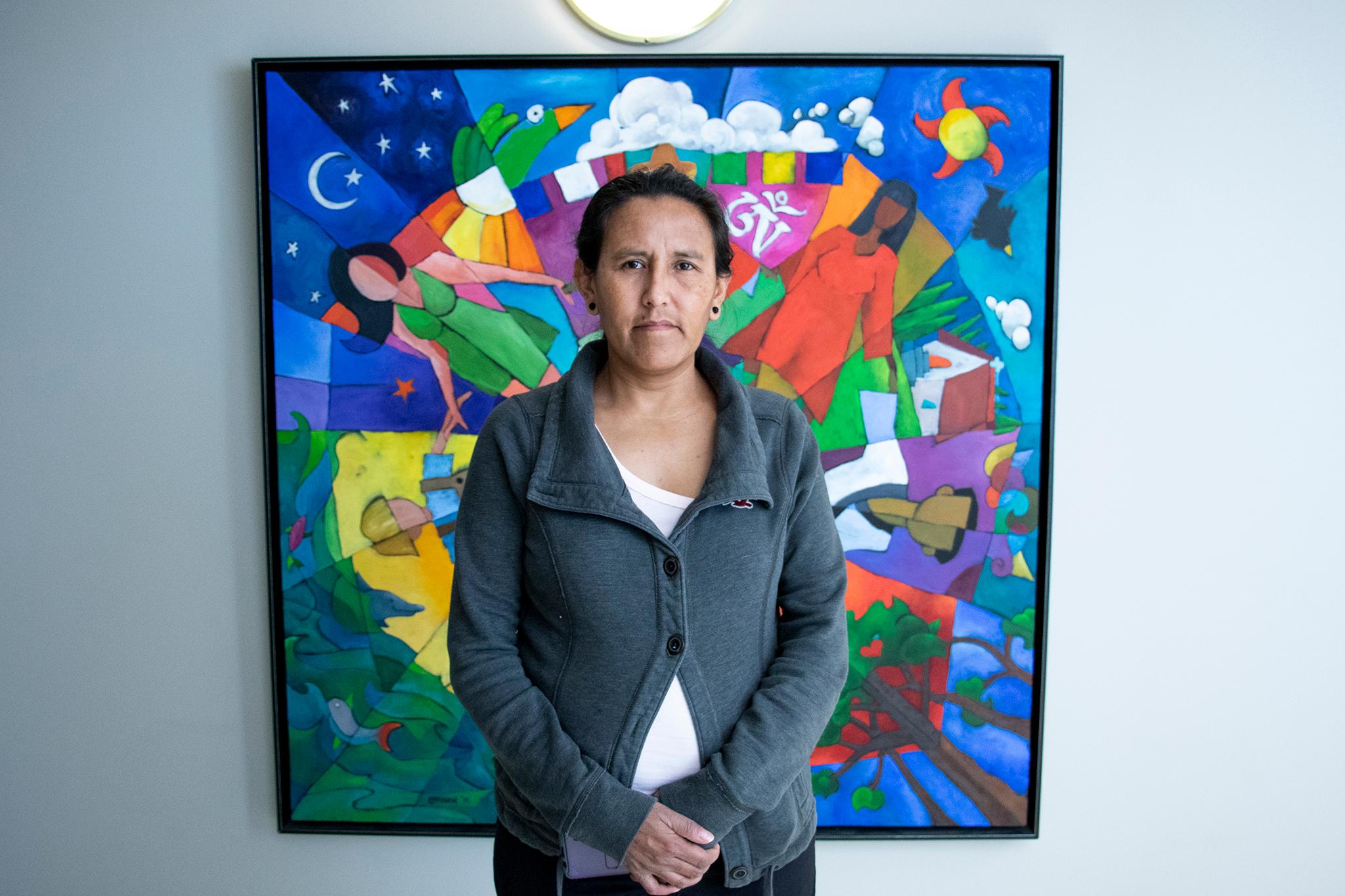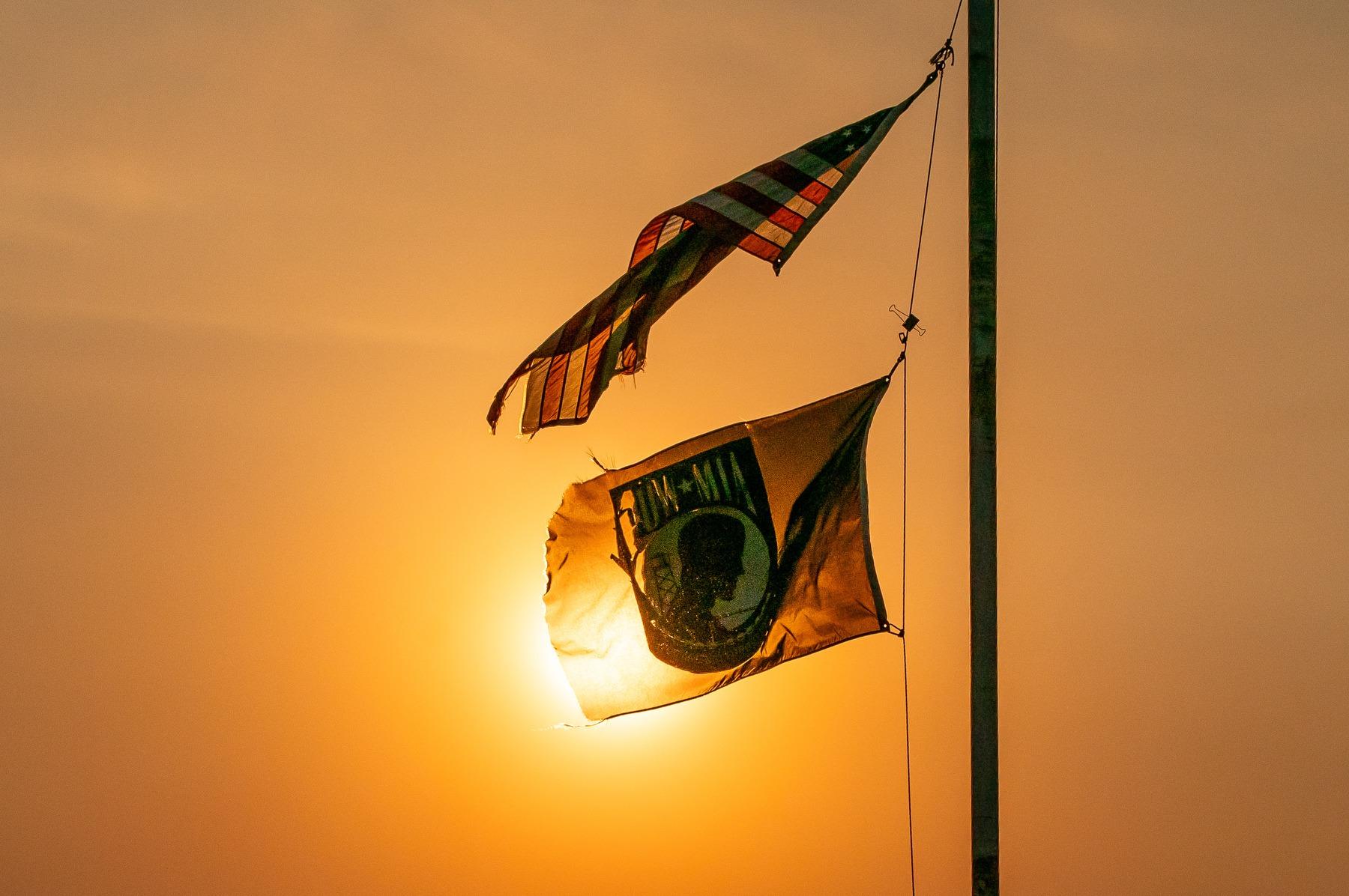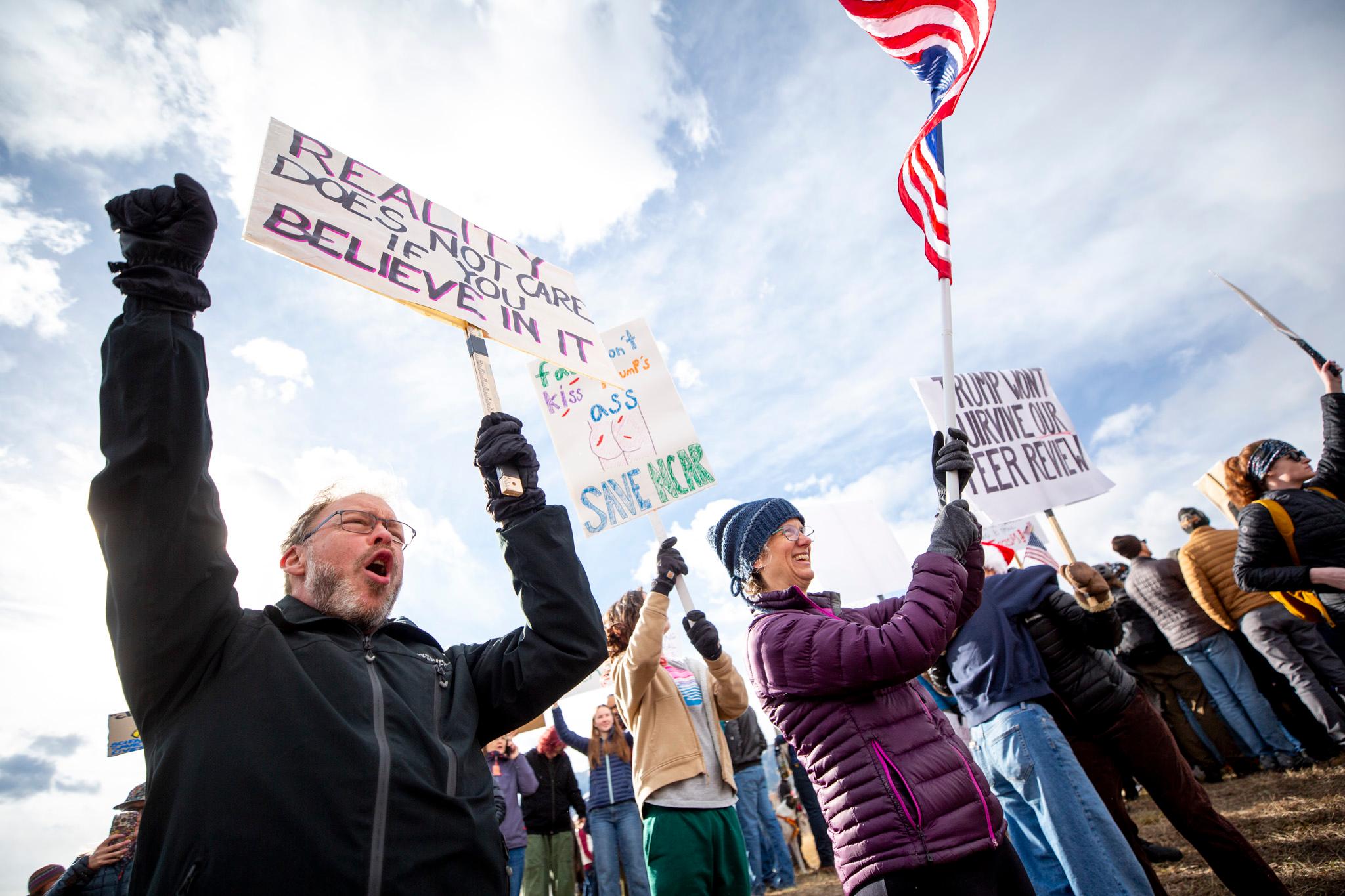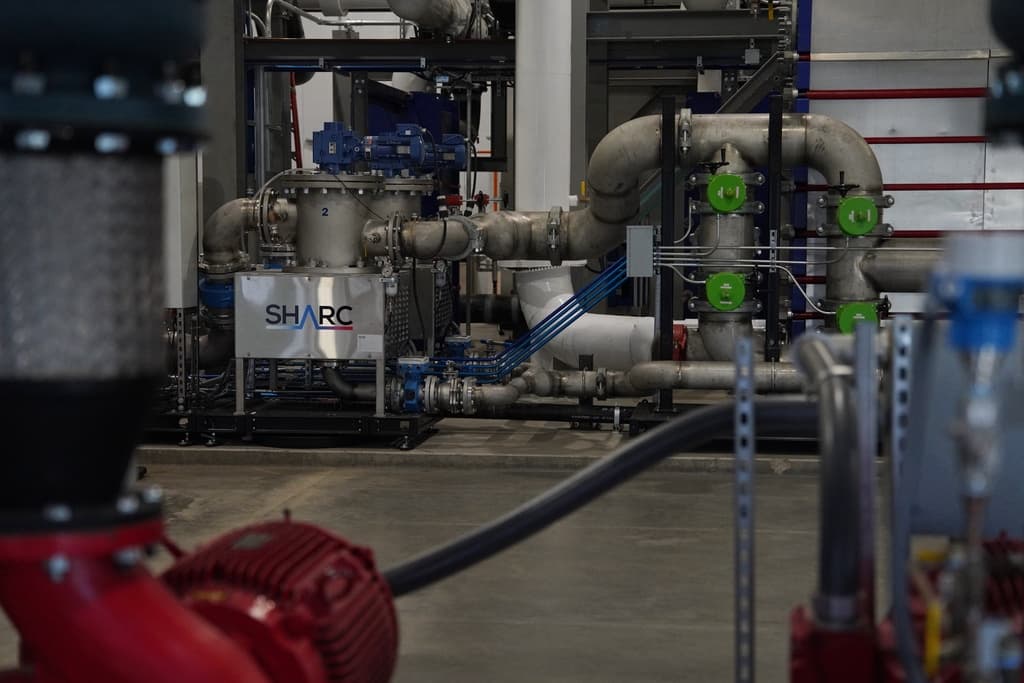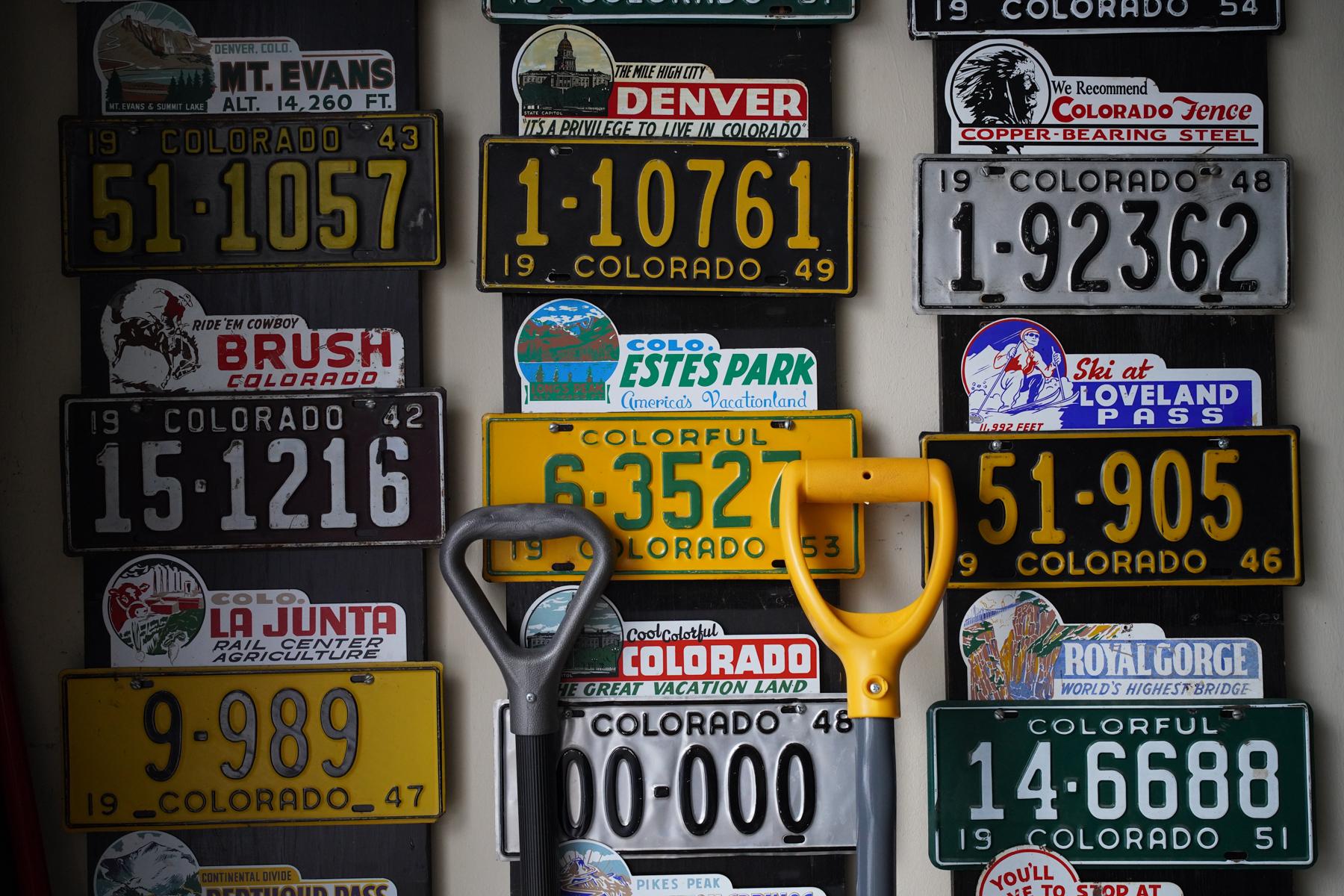
Colorado Wonders is where people like you submit questions about the state.
In 2023, we received — and answered — questions from all across Colorado. Some were universal: “Why does your windshield ice up on some nights and not others?” While others were specific: “What’s the deal with the huge piece of art hanging behind the bar at Denver’s Ellie Caulkins Opera House?" Readers were fascinated by Colorado's license plates, wildlife, local history, and etiquette.
Here’s a list of the 10 most popular Colorado Wonders questions of the year, asked by you and answered by us.
If there’s something you want to know in 2024, submit your own Colorado Wonders inquiry here.
What happened to the town of Uravan, Colorado?
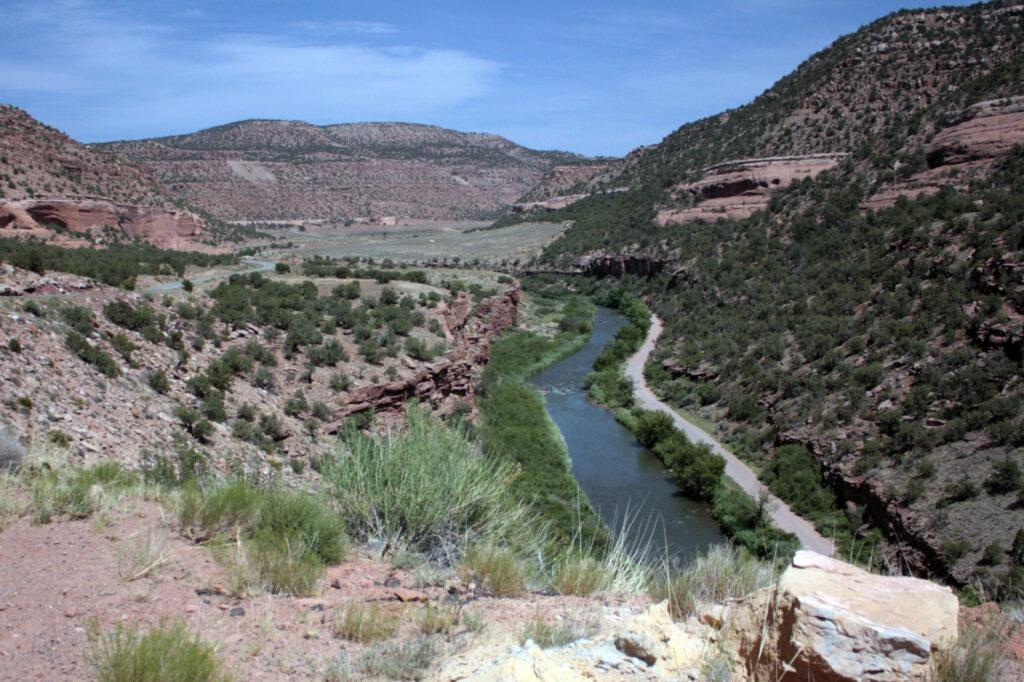
It's been almost 40 years since one Colorado community was wiped off the map. Uravan was a uranium company town established in Montrose County in 1935. Now, it’s a Superfund site because of the hazardous waste there, according to the state's Department of Public Health and the Environment.
The small town piqued the curiosity of Kevin Pendergraft in Colorado Springs, who reached out to ask CPR’s Colorado Wonders: What happened to Uravan, and what was its connection to the Manhattan Project?
The town was connected to the Manhattan Project, the World War II effort to build an atomic bomb that saw some renewed interest this summer thanks to the blockbuster “Oppenheimer.” The movie chronicles physicist J. Robert Oppenheimer’s development of the atomic bomb and his regrets later in life about unleashing something so destructive.
As for Uravan, there was a uranium mine and mill, where quite a few people worked into the Cold War. But in the 1980s, the federal government declared Uravan unsafe because of radioactivity, and around 800 people had to move. The whole town was torn down and buried. Now, it's just a patch of empty land that’s been remediated.
Why are there so many expired license plates on Colorado roads?
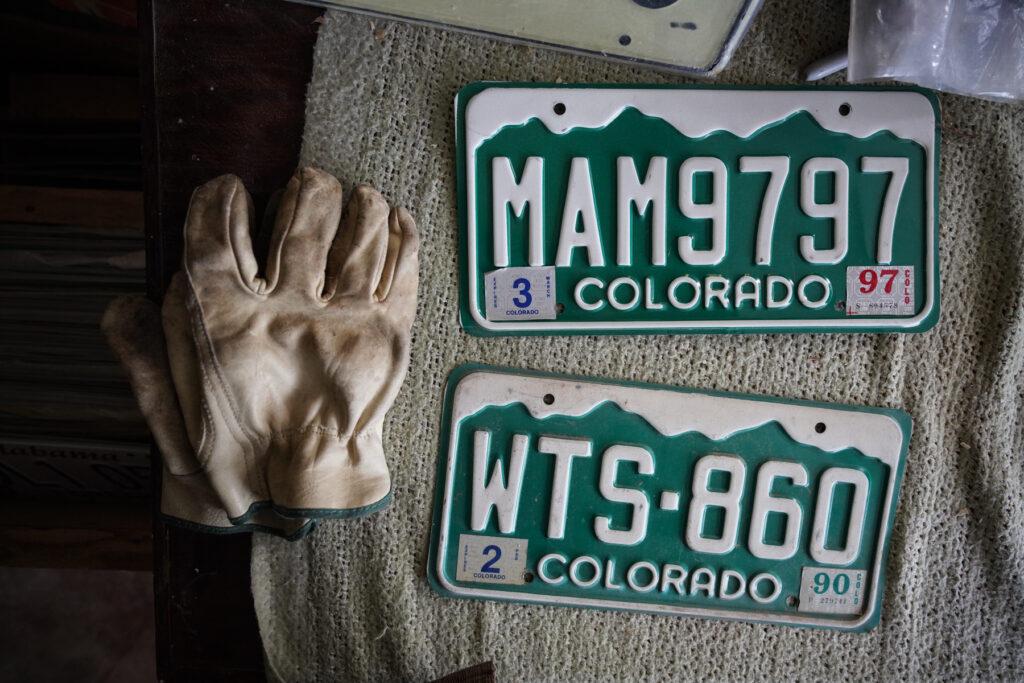
Theodore Shille was driving home from the grocery store when he noticed something. During the short trip, he passed three cars with expired temporary license plates or no plates at all.
It wasn’t the first time he had seen this near his Denver home, so he wrote in to CPR News and asked, “what’s the deal with all the cars driving around without a license plate, or with an expired temporary plate?”
It’s a question that regularly appears on a local Reddit message board.
Why are there so many cars on Colorado roads with expired plates? At the beginning of the COVID-19 pandemic, before vaccines were readily available, county Department of Motor Vehicle offices were closed frequently and experienced supply chain issues for materials needed to make the plates. Could that still be affecting permanent license plate turnaround times? Are drivers lax in getting their plates updated, or is something else happening?
Each case is different. But high registration fees, slow title processing times and lack of enforcement all contribute to the large number of temporary plates that drivers see on Colorado streets.
What’s with all those black license plates in Colorado?
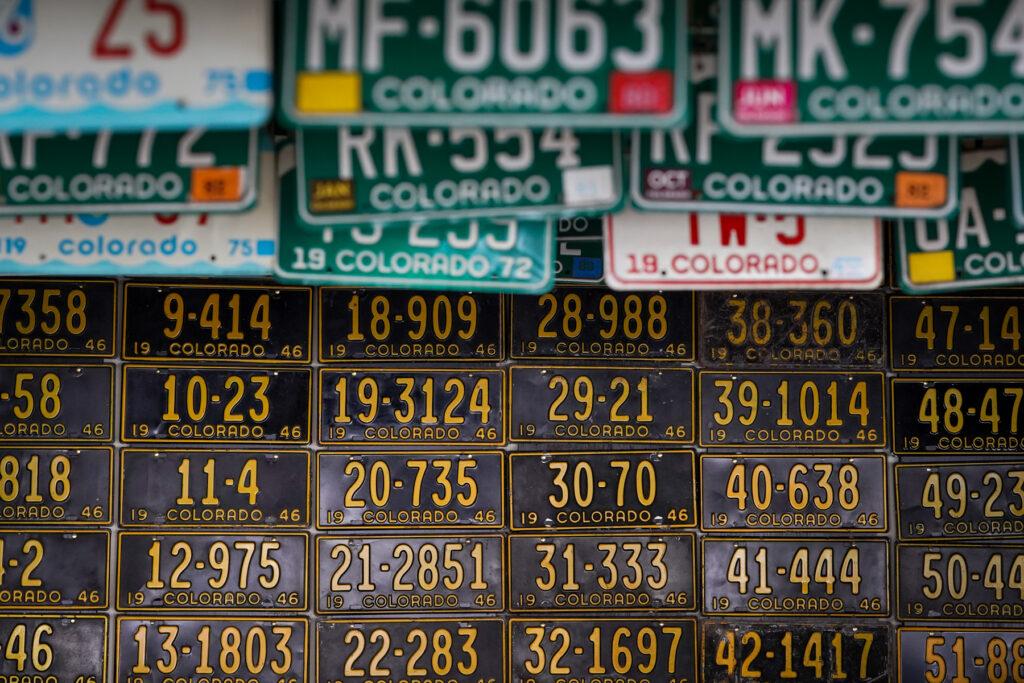
If you’ve driven around Colorado lately, you’ve surely seen them. Black license plates with white letters and numbers. Their ubiquity has a lot of Coloradans wondering, what’s up with them — and where can I get one?
We put that question, and a bunch of others about license plates, to Chris Hochmuth, who manages license plate inventory for Colorado's Department of Revenue.
Turns out, those black license plates are a reissue of ones issued in 1945 and popular from the 1950s. Purchases of the latest iteration of these plates benefit people with disabilities.
“This came out of a bill last year. They brought back the black, red and blue backgrounds along with the green plate with the white mountains,” Hochmuth said. “So the green plate with the white mountains came first in 2022 and then the red, black and blue came (in) January of 2023.”
It’s $25 annually to have the plates — and you can switch your plates out right away.
Long before Denver was here, nearly 50 Native American tribes called the Front Range home
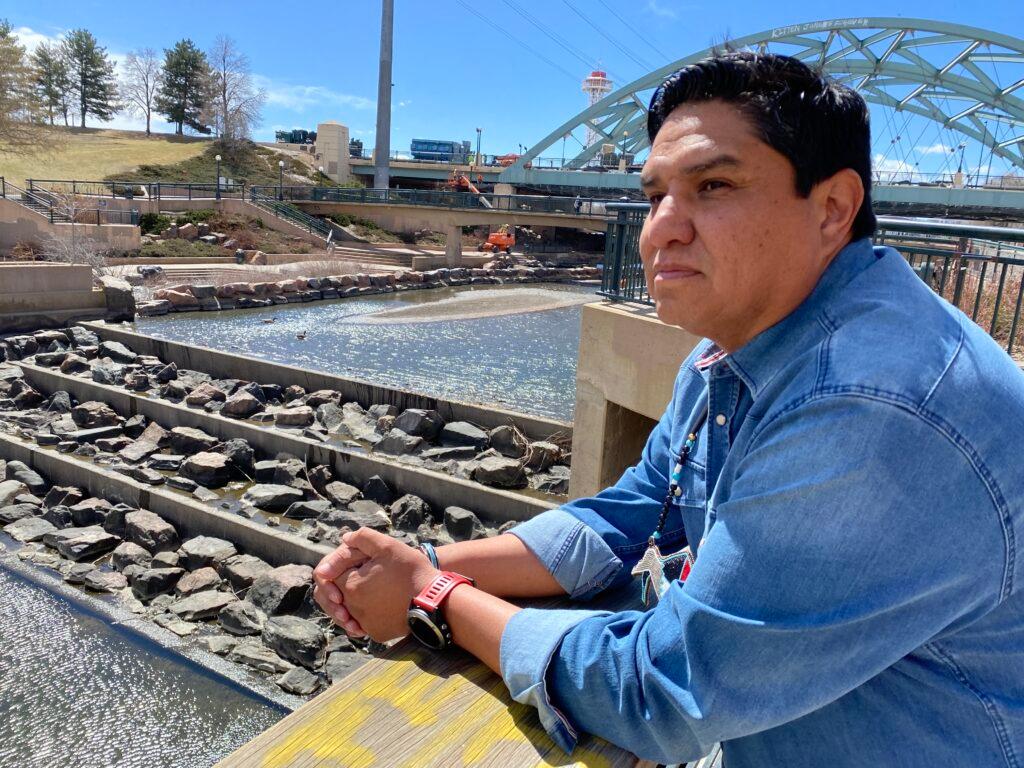
Colorado’s history can often be headline news. That includes things like the proposed renaming of Mt. Evans or the removal of a statue of a Civil War soldier. It prompted a reader to ask CPR’s Colorado Wonders a question: "What Native American tribes lived in the area now known as Denver?"
It came to CPR News from Darlene Graham, a retired Denver Public Schools teacher. She remembers learning about the Ute tribe, but not much more.
“I think it's fifth grade where they study Native Americans in this area. It's just a fascinating subject,” she said. “I think it's sometimes kind of forgotten.”
Standing in downtown Denver, Ernest House Jr. agreed.
“We're sitting here on the banks of the confluence in downtown Denver and as I'm looking around, I saw people that were fishing, that were meditating, that were just walking their dogs,” said House, a member of the Ute Mountain Ute tribe from southwestern Colorado and a former executive director of the Colorado Commission of Indian Affairs.
“I go back in time and think about how our tribal nations had also utilized this area. Water's so important,” he said.
Water was the lifeblood, helping sustain people in this region for 12,000 years or more.
The Utes and other tribes lived on the mountain side of the South Platte. And, House said, on the other side lived “the Plains tribes, those tribes that were moving with buffalo, they were utilizing horses, large horse tribes like the Comanche, like the Sioux Nations, Cheyenne, Arapahoe, so on.”
They traveled and traded around this region and beyond.
Where is the most conservative place in Colorado?
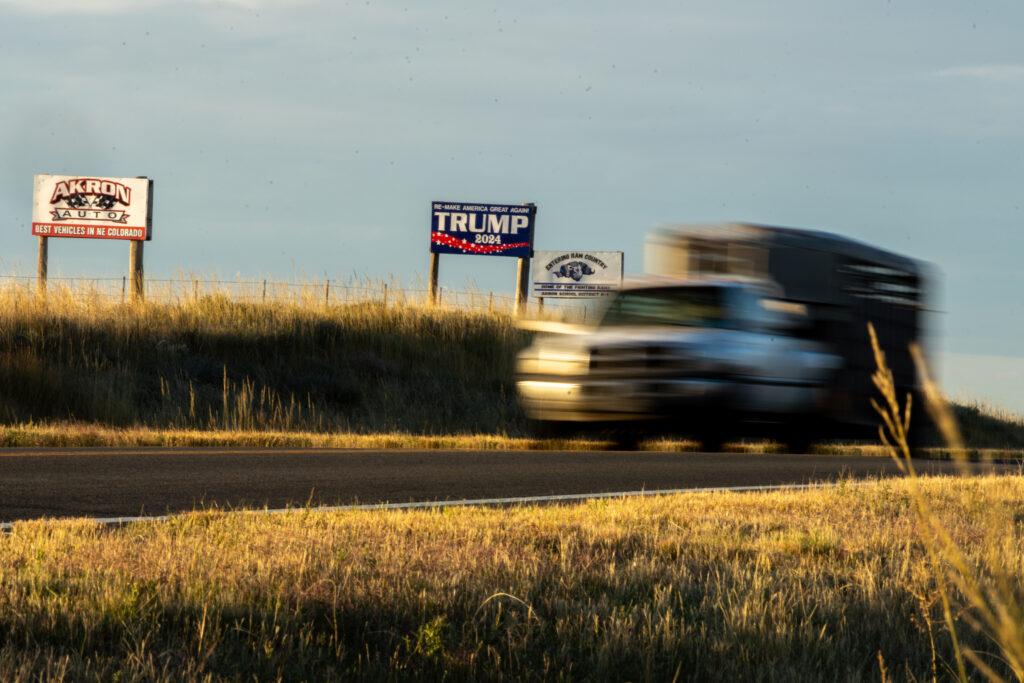
Colorado’s political landscape has shifted swiftly in just the past decade as the state moved from a purple presidential toss-up to a deep blue Democratic stronghold.
But that doesn’t mean there aren't hundreds of thousands of conservative residents living in the state. And that prompted one of our listeners to ask: "What part of Colorado is now its reddest?"
To answer that question requires first coming up with a definition for how to measure a place’s political character. Colorado’s independent redistricting commissions recently had to do just that, in order to calculate the competitiveness — or lack thereof — in the districts they were drawing.
To determine each state legislative district’s politics, staff looked at how its residents voted in six separate statewide races from 2016 and 2018.
“Not surprisingly, the two most conservative districts are the two House districts in northeastern Colorado,” said Jeremiah Barry, an attorney with the state legislature who was among the staff that advised the commissions during their work in 2021.
The area is sparsely populated, full of ranches and farms and small towns. And while Colorado does have many other rural districts, what makes these two different is that they draw very few voters from cities or suburbs. They also lack the kind of liberal resort towns that make mountain districts more politically mixed.
Colorado has more than 200 specialty license plates. Here’s what they mean and how to get one
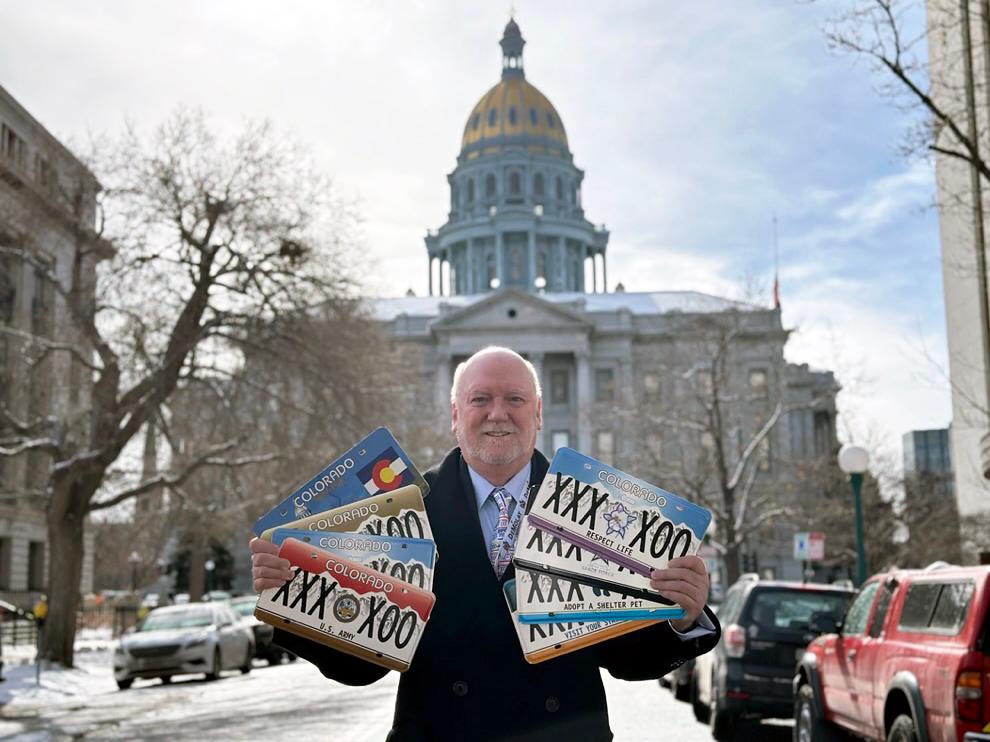
We’ve all seen Colorado’s default license plate. It has a green background with white, snowy mountains. Very on brand.
There are a lot of specialty plates, too. And it turns out, Colorado has created more than 200 to choose from. But getting such a plate isn’t as simple as checking a box on a form.
"I really like the American Indian Scholar plate, the (Support the) Horse plate, the Rocky Mountain National Park plate,” said Chris Hochmuth, who manages license plate inventory for Colorado’s Department of Revenue.
There’s one for breast cancer awareness. Another for organ donations. And there are plates for all of Colorado’s professional sports teams.
Do you really like bees? One of the newest options depicts a bee sitting on a colorful flower. It’s called Support Pollinators, and it has become very popular, very quickly.
If you’re interested in showing your love for the pollinators, you first have to donate at least $25 to the People and Pollinators Action Network. The nonprofit helps with environmental policy, sustainable agriculture, and habitat management for insects and people.
Most of these designs benefit a cause or an organization. Are you a Colorado Rockies baseball fan? Make a donation of $52.80 to the team’s charitable foundation, then a purple plate with the Rockies logo over some icy mountains is yours.
Some plates are more exclusive, like the ones that are only available if you’ve served in the armed forces, or if you’ve attended certain Colorado universities.
From the Continental Divide to Utah, or somewhere else? Where is the Western Slope in Colorado?
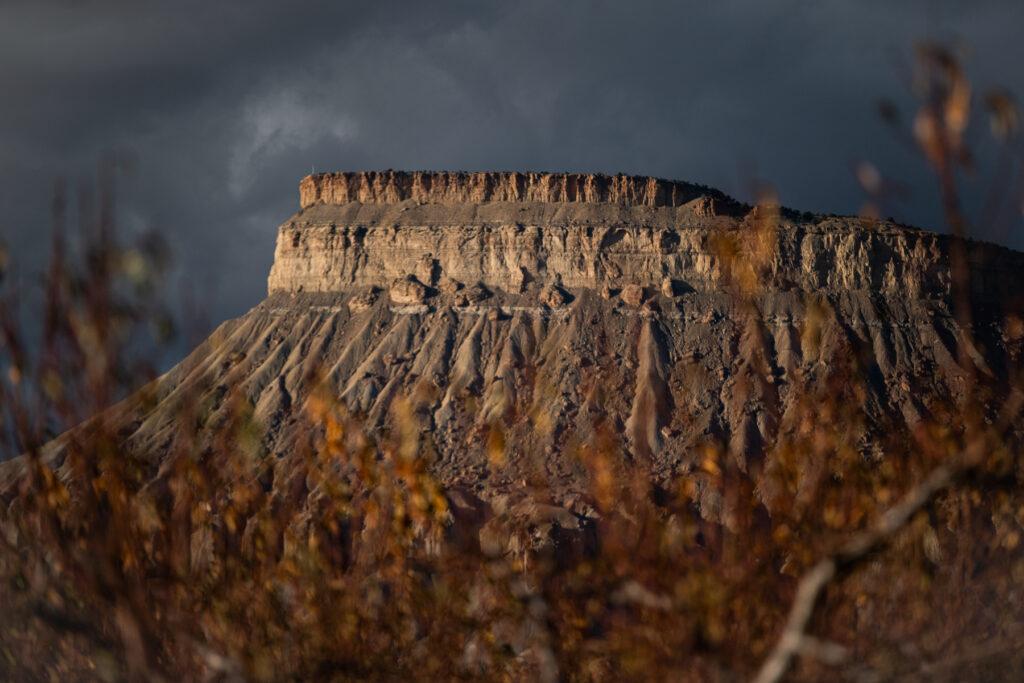
Have you ever skied at Steamboat Springs? Have you walked up that tangle of a trail to the jewel-tone waters of Hanging Lake? Have you cheered in the stands of the sheepdog trials in Meeker?
If so, you’ve been to the Western Slope. Or have you?
“What is the extent of the Western Slope?” Grand Junction resident Scott Braden wrote into Colorado Wonders. “How far does it go out? What are its boundaries?”
Braden also asked about the region’s official name: “Is it Western Slope or West Slope?”
These might be cut-and-dry questions for a geography expert. But then again, they might not.
What’s the etiquette when driving behind a cyclist on narrow, twisting mountain roads?
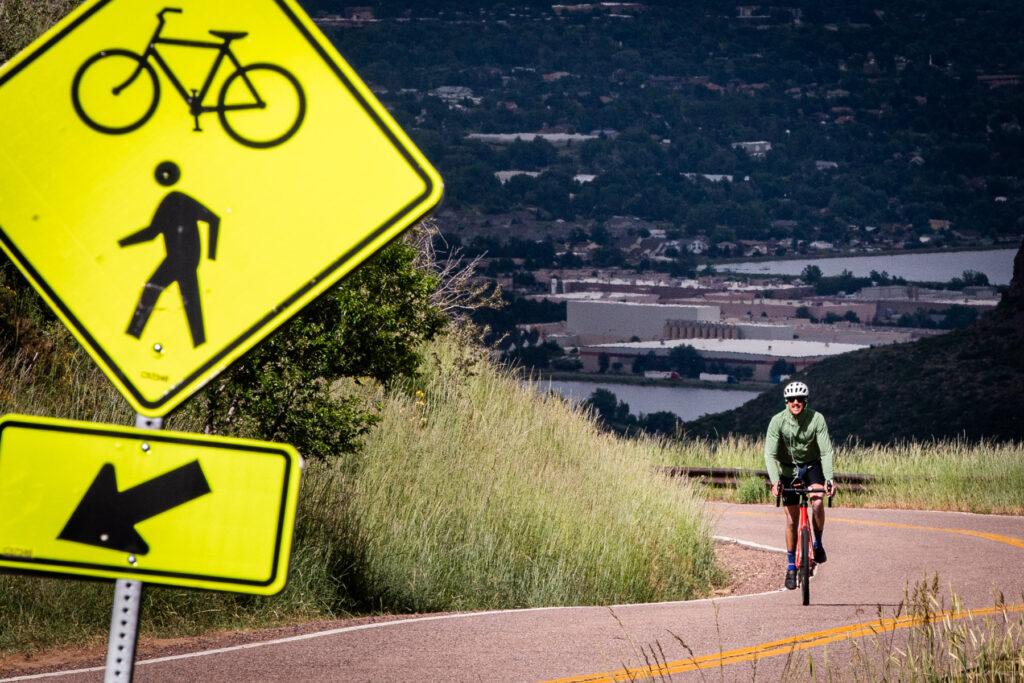
The state’s narrow, winding roads can be dangerous for both drivers and cyclists tasked with sharing the road, even when there’s not much traffic around. Add busy weekend traffic, with cars backed up behind you, and the danger gets even higher.
That’s the sort of anxiety provoking situation that inspired Littleton’s Kristen McCammon to ask: “What's the proper etiquette as a car driver when encountering cyclists on curvy mountain roads?”
McCammon said she has come upon cyclists in various parts of the state and hasn't known what to do.
“I feel like if I try to pass them, that's when somebody's going to come around a blind curve that I can't see,” she said.
Keith Stefanik, chief engineer with Colorado Department of Transportation, described himself as an active cyclist. He often rides in the mountains recreationally and bike commutes about 75 percent of the year. He called McCammon’s concerns a “grand old question” at CDOT.
As far as state law is concerned, bicyclists are legitimate road users just as much as any car or truck. That’s not just the case on mountain roads; It's true on all roads in the state except where bikes are expressly prohibited, like all the black and yellow striped roads on this map. That being said, there are both legal protocols and ethical guidelines regarding the meeting of cyclists and vehicles.
As of 2009, Colorado motorists are required by law to give cyclists a minimum three-foot buffer at all times. That might not sound like a lot, but it is especially important to remember on those skinny, twisting mountain roads. In return, vehicles may legally pass a cyclist on double yellow line no-passing zones, provided it’s done safely.
Justin Martin, a professional mountain and gravel bike racer living in Colorado Springs, said when cyclists don’t get that buffer, they notice.
Miller moths 101: Migration patterns, their role as pollinators and why they’re attracted to light
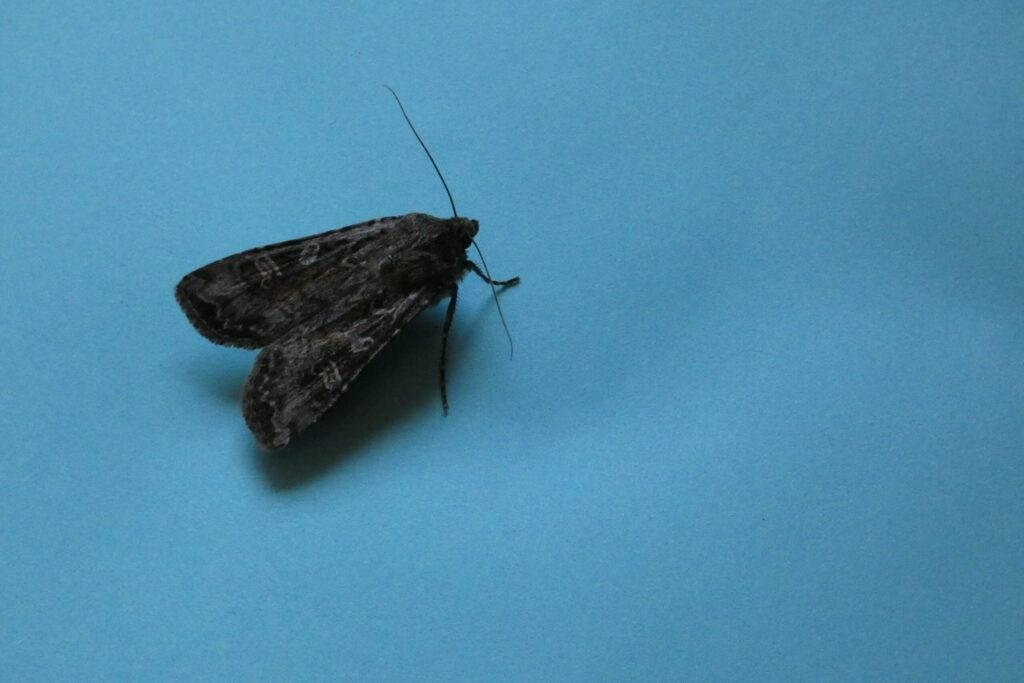
Very few folks on the Eastern Plains and Front Range of Colorado can avoid miller moths at certain times of year. That includes Nan Reubert, a resident of Centennial who started swatting moths in May.
"I used to smash 'em, you know, stomp 'em," Reubert said. "Then I realized these little guys are migratory. I had not known that. So now I just try and shoo them on their way."
She's right; the moths are migratory. When the days get warmer and longer, that is a signal to the moths to head west from Kansas, Nebraska, Wyoming and Colorado's Eastern Plains. Their final destination is the Rocky Mountains where they spend the summer foraging and feeding on alpine flowers.
Shiran Hershcovich is a scientist at the Denver-area Butterfly Pavilion. As a lepidopterist, she studies butterflies and moths and says many of the petite piloting pilgrims don't survive the summer.
"It turns out miller moths are essentially protein snacks on wings," she said. "A lot of them will feed other animals that we love seeing in the ecosystem, like birds, bears, and really all sorts of critters."
Her advice? Be kind to them.
What does the reintroduction of wolves mean for Colorado’s deer and elk herds?
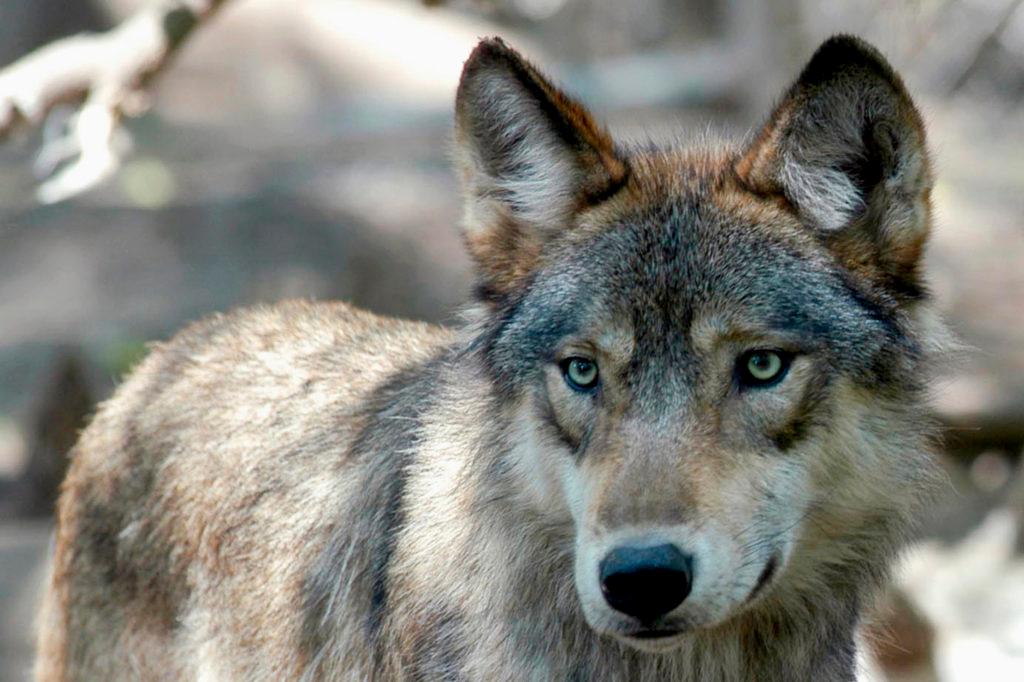
Last winter was one of the worst winters for northwest Colorado big game animals in decades. This made Robert Fisher curious: "How are wolves going to factor into all this?"
2023's historic snowpacks made worse by persistent winds resulted in a massive die-off for deer, elk and pronghorn antelope — particularly among herds in the Rio Blanco and Moffat County region.
That led Colorado Parks and Wildlife to make dramatic cuts to the number of big game hunting licenses issued in the area. Some licenses were cut down to the minimum allowable — just 10 per hunt code.
After hearing about the decimated herds, Fisher asked how the reintroduction of wolves might affect big game animals, particularly in bad winter years.
It’s not the only question that Colorado Parks and Wildlife has fielded about the voter-mandated wolf reintroduction.

